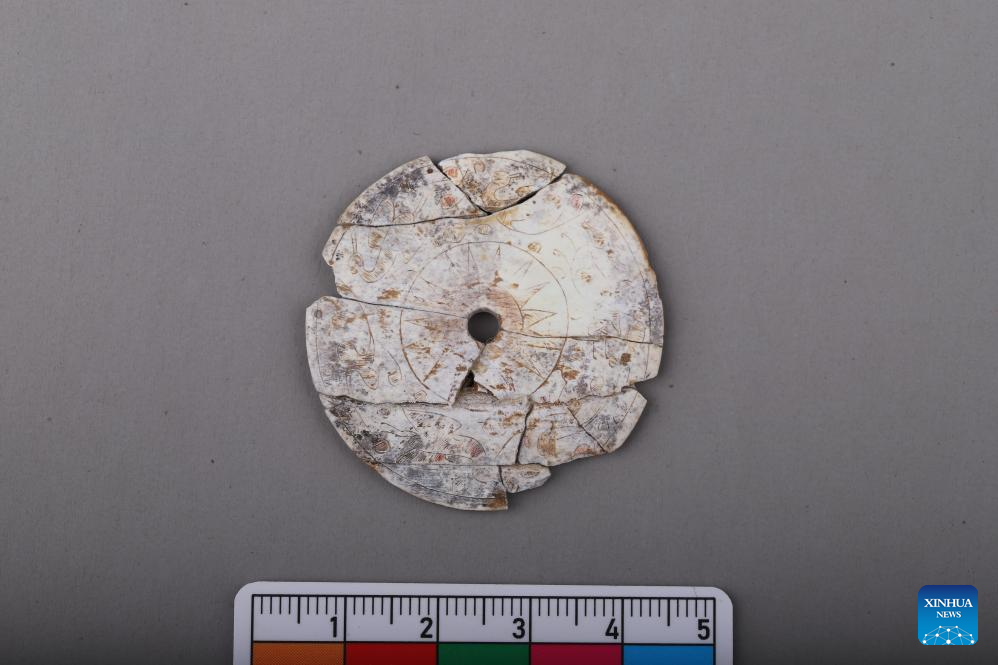
This photo taken on Jan. 5, 2024 shows a piece of boneware unearthed from a family cemetery of high social status, dating back to the Wei and Jin dynasties (220-420), in Luoyang City, central China's Henan Province. (Luoyang Municipal Institute of Archaeology/Handout via Xinhua)
ZHENGZHOU, Feb. 1 (Xinhua) -- Three tombs belonging to a family of high social status, dating back to the Wei and Jin dynasties (220-420), have recently been discovered in Mengjin District of Luoyang City, central China's Henan Province.
The tomb cluster which slopes down in layers is believed to be designed delicately, suggesting the existence of a prestigious family back then, according to Liu Bin, associate researcher from the city's archaeological research institute, who is in charge of the excavation project at the site.
The M1 tomb, which is of the highest grade constructed among them all, consists of a long tomb passage, paved paths, brick and stone doors, and chambers. With 12 pillar holes on each side of the 40-meter-long main passage, the tomb has seven steps inside, making the overall depth of the underground tomb reach 11 meters.
"Such a tomb passage and multiple stairs built on a long slope are a symbol of high social status of the tomb owners during the Wei and Jin dynasties. The M1 tomb's scale ranks second only to the emperor mausoleum at that time," said Liu.
Over 200 pieces of pottery, porcelain, bronzeware, boneware, jadeware, gold and coins were also unearthed at the site, providing new materials for research on the burial custom during that period.
"Among the total, a piece of ivory lacquerware unearthed at the M1 tomb is made out of exquisite workmanship, indicative of the extraordinary social status of the tomb owner," Liu said.
Some stele remnants were found at the site, with inscriptions recording information including names of the tomb owner's followers. However, without exact names and life stories of the tomb owners on the steles, their identity remains a mystery and needs further investigation, according to Liu. ■

This undated aerial drone photo shows the view of a family cemetery of high social status, dating back to the Wei and Jin dynasties (220-420), discovered in Luoyang City, central China's Henan Province. (Luoyang Municipal Institute of Archaeology/Handout via Xinhua)



